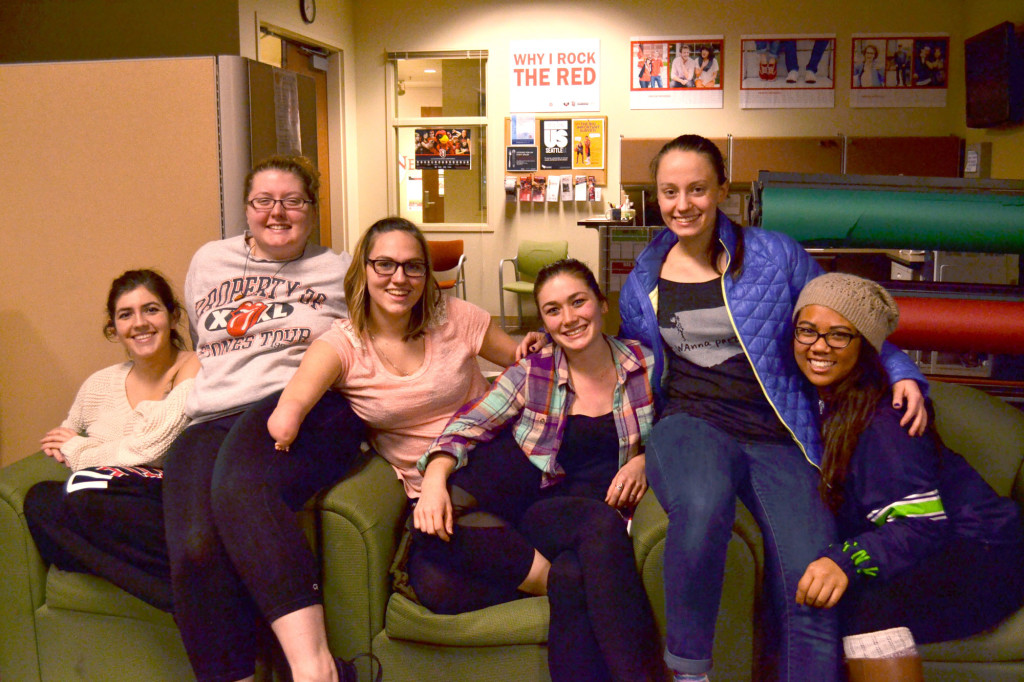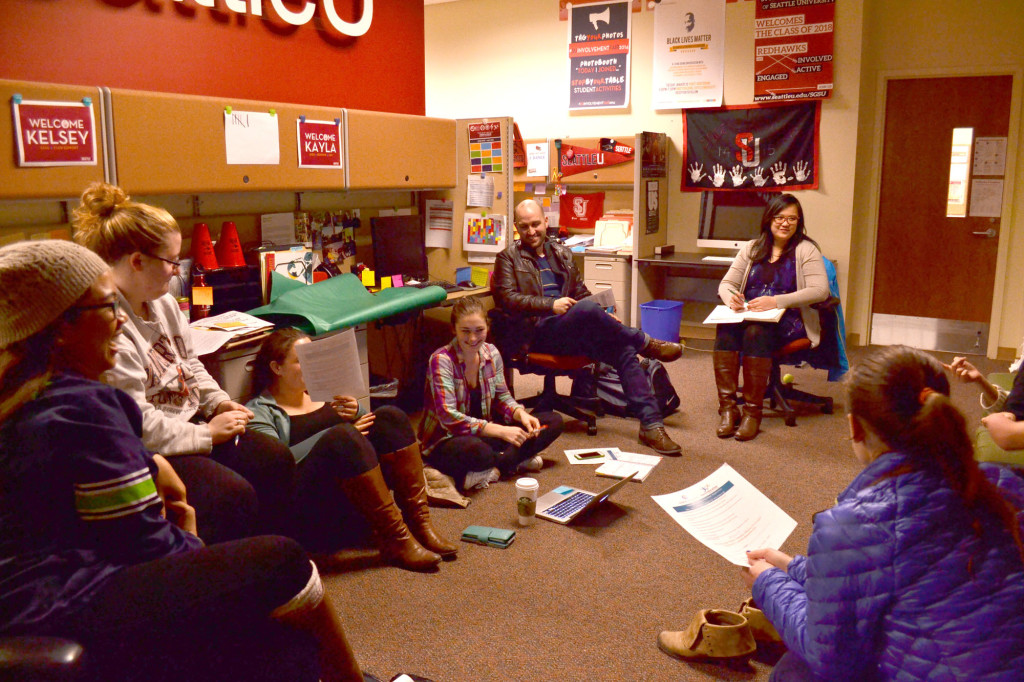Seattle University, as we all know, is a community committed to cultivating leaders for a just and humane world. The Seattle U Dance Marathon is one of the many on-campus programs and events that serves to cultivate this spirit within Seattle U students.
SUDM, fronted by what’s called the Seattle U Steering Committee, is a legacy event here at Seattle U aimed at combatting the realities of diseases in children through fundraising. The Dance Marathon is a fundraising event by Children’s Miracle Network that connects schools with children’s hospitals across the country.

SU Dance Marathon’s Steering Committee Hannah Delsohn, Valerie Fisher, Anna Pickett, Emily Downing, MacKenzie Gaddy, and Kathleen DeVega (not pictured: Michelle Pierce).
Emily Downing, executive director of SUDM is responsible for overseeing the Steering Committee during the planning of the event. This planning includes outreach, donation acquirement and more. Downing started participating her
freshman year.
“Some of my friends were [dancing], so I signed up as well,” Downing said. “The impact it had on me was phenomenal. I knew I had to continue [being involved] to help this movement grow. This event completely embodies the SU Spirit and mission. This event literally saves children’s lives.”
The Uncompensated Care Fund at Seattle Children’s Hospital—the fund for which SUDM fundraises— is dedicated towards eliminating the debt caused by medical bills that families cannot afford to pay. The sum of money provided by the fund can be crucial to the family’s financial condition and morale. Access to these funds allows parents and providers to progress with treatment uninhibited by cost, allowing complete focus on the patient.

SU Dance Marathon’s Steering Committee Anna PIckett, Hannah Delsohn, MacKenzie Gaddy, Valerie Fisher, Kathleen DeVega, Emily Downing, and Michelle Pierce
Rounds of testing, various therapies, experimental procedures, and expert doctors are all efforts Seattle Children’s make to combat life-threatening ailments that patients battle everyday. These efforts can add up financially, amounting to extraordinary costs ranging from several thousands to hundreds of thousands of dollars. Medical insurance usually does not cover all of these costs and few families can afford to pay out of pocket. The option of applying, and ultimately being selected, for help from the Uncompensated Care Fund can be a miracle for many families.
SUDM involves a year of planning before the event takes place. Preparation includes outreach events, tabling, and sponsorship acquisitions. Promoting and recruiting efforts around campus help ensure a positive turnout. The scope of the philanthropic efforts spans a nationwide campaign: Children’s Miracle Network interconnects hundreds of Children’s Miracle Network Hospitals nationwide and over 200 universities.
Being on one’s feet for 16 hours is a daunting task, but the hardships faced by patients at Children’s Hospital can be even more daunting. For many patients, treatments continue around the clock.
SUDM teams are made up of students affiliated or not affiliated with other student organizations. Each member must raise at least 100 dollars in order to participate in the event. Each participant must remain on their feet for the full 16 hours. Each of the 16 hours has its own music theme.
Colleen Donovan, an SUDM morale captain, has the responsibility of recruiting participants and helping boost energy during the event.
“This will be my first year officially dancing,” Donovan said. “Last year I went and visited a couple of friends, [and] ended up staying over half the time it was so fun. I am excited to be there the whole time.”
Donovan said that this cause is personal to her. Two of Donovan’s friends, one in Seattle and one from her hometown of Elk Grove, CA, faced significant medical challenges that involved visits and stays at children’s hospitals. The friend at home had Non-Hodgkin’s lymphoma. It was because of the Uncompensated Care Fund from the local Children’s Hospital that her family managed the course of her treatment.
Hailee Johnson, a junior, is another student donating her time to the cause this year.
“I am dancing because I think it’s a wonderful cause,” Johnson said. “I wanted to take on a stronger role and be a dancer this year. I believe in the cause and the mission of Seattle Children’s Hospital. The 16 hours does scare me … but the symbolism behind it is really important.”
Her point was that for many children, fighting these illnesses could take weeks, months or years.
“16 hours is nothing in comparison,” Johnson said.








